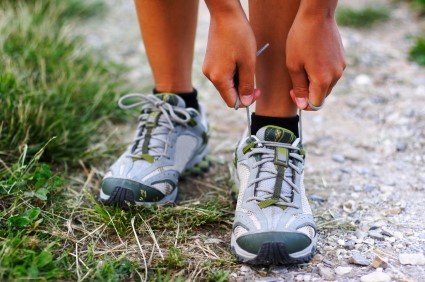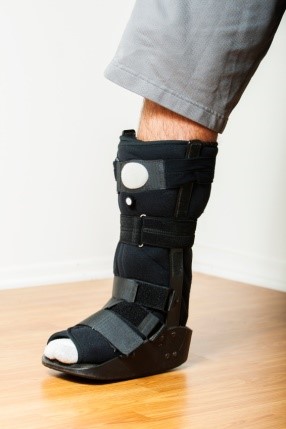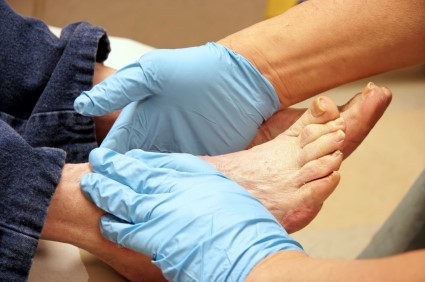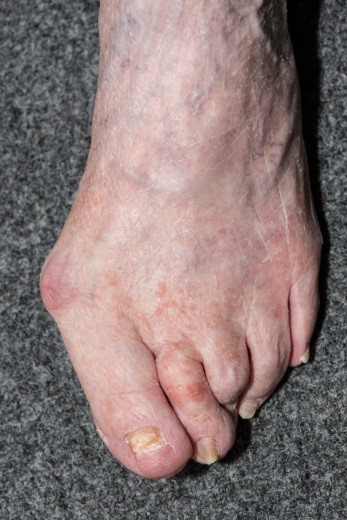Blog
U.S. Army Holds Research on Running Injuries in Soldiers
 The Army of the United States needs to make sure their soldiers are healthy, including their feet. To aid with keeping the frontlines battle fit, The Army conducted the Born To Run story line and the forefoot/rearfoot debate. The study delved into past-year injury rates among 1027 soldiers, which included 232 women who were injured.
The Army of the United States needs to make sure their soldiers are healthy, including their feet. To aid with keeping the frontlines battle fit, The Army conducted the Born To Run story line and the forefoot/rearfoot debate. The study delved into past-year injury rates among 1027 soldiers, which included 232 women who were injured.
“There are no large studies evaluating differences in injury profiles between heel strike and non-heel-strike runners,” one poster notes. “Due to high musculoskeletal injury rates in soldiers, a better understanding of the potential relationship between foot strike and injury could be beneficial to the military services.”
Running can be a great way to keep your body healthy, but it can also lead to injuries if you’re not careful. If you have a running injury, or are concerned about getting one, contact Dr. Michael Newman, DPM of Pennsylvania. Dr. Newman can instruct you on proper running techniques and help you keep your lower extremities safe.
How to Prevent Running Injuries
Many common running injuries are caused by overuse and overtraining. When the back of the kneecap starts wearing out and starts causing pain in your knee, this is commonly referred to as runner’s knee. Runner’s knee is a decrease in strength in your quadriceps and can occur if you’re not wearing properly fitted or supporting shoes. Runner’s knee usually is treated with strengthening exercises focusing on the quad muscles and sports orthotic. To prevent runner’s knee, focusing on hip strengthening is a good idea, as well as strengthening your quads to keep the kneecaps aligned. Physical therapy can help you learn the best exercises to heal runner’s knee.
What Are Some Causes of Running Injuries?
- One cause of a common running injury is called iliotibial band syndrome.
- Plantar fasciitis is also another common injury.
- Stress fractures can occur from overtraining, lack of calcium, or even your running style.
Best Ways to Prevent Running Injuries
- Wear footwear that fits properly and suits your running needs.
- Running shoes are the only protective gear that runners have to safeguard them from injury.
- Make a training schedule.
If you have any questions, feel free to contact our offices in Plymouth Meeting and Ambler, PA. We offer the latest diagnostic and treatment technologies for all your foot care needs.
Read more about Preventing Running Injuries
Actor Breaks Toe At Popular Comics Convention
 Teen Wolf actor Tyler Posey tried to pull a goofy stunt at this year’s San Diego Comic-Con but ended up getting hurt. When he was called to make his entrance on stage for his show’s panel, he came out doing a cartwheel. Unfortunately, he landed badly and broke his toe.
Teen Wolf actor Tyler Posey tried to pull a goofy stunt at this year’s San Diego Comic-Con but ended up getting hurt. When he was called to make his entrance on stage for his show’s panel, he came out doing a cartwheel. Unfortunately, he landed badly and broke his toe.
After the panel Posey applied some Scotch Tape to the broken appendage to keep it in place. “It was a nice cartwheel, it was worth it,” mentioned Tyler Hoechlin, Posey’s Teen Wolf costar. “Great cartwheel, just a little softer on the landing next time!”
Broken toes are unpleasant injuries that can make walking tough. To get assistance with this type of condition, call podiatrist Dr. Michael Newman, DPM of Pennsylvania. Dr. Newman will diagnose which bone in your toe is broken and get you an appropriate form of treatment.
What to Know About a Broken Toe
Although most people try to avoid foot trauma such as banging, stubbing, or dropping heavy objects on their feet, the unfortunate fact is that it is a common occurrence. Given the fact that toes are positioned in front of the feet, they typically sustain the brunt of such trauma. When trauma occurs to a toe, the result can be a painful break (fracture). Another type of trauma that can break a toe is repeated activity that places stress on the toe for prolonged periods of time.
Symptoms of a Broken Toe
- throbbing pain
- swelling
- bruising on the skin and toenail
- the inability to move the toe with ease.
- toe appears crooked or disfigured
- tingling or numbness in the toe
- injured person experiences fever or chills throughout their body, and when there is an open, bleeding wound present on the toe.
Generally, a minor toe break will heal without long-term complications, but it is important to discontinue activities that put pressure on the toe. It is best to stay off of the injured toe with the affected foot elevated on pillows. Swelling can be alleviated by placing an ice pack on the broken toe for 15 minutes every two hours during the first two days after the fracture.
For more information about Broken Toes, follow the link below.
If you have any questions, feel free to contact our offices in Plymouth Meeting and Ambler, PA. We offer the latest diagnostic and treatment technologies for all your foot care needs.
Read more about Broken Toes
Custom Orthotics May Help Diabetic Ulcers
 According to new research results, conducted by Jan Ulbrecht, MD, and his colleagues and published in Diabetes Care, patients who wear custom-made orthoses experience fewer ulcer recurrences than those who opt for standard appliances. “If shoes adequately offload pressure and are used consistently, they reduce risk of ulceration," Ulbrecht, said, noting that it is “very easy” to incorporate plantar pressure into current orthoses' designs. While the appliances are not expensive, their costs may be higher than those allowed by current Medicare reimbursement levels. Ulbrecht is the director of endocrinology and diabetes services at Mount Nittany Health System, State College, Pa.
According to new research results, conducted by Jan Ulbrecht, MD, and his colleagues and published in Diabetes Care, patients who wear custom-made orthoses experience fewer ulcer recurrences than those who opt for standard appliances. “If shoes adequately offload pressure and are used consistently, they reduce risk of ulceration," Ulbrecht, said, noting that it is “very easy” to incorporate plantar pressure into current orthoses' designs. While the appliances are not expensive, their costs may be higher than those allowed by current Medicare reimbursement levels. Ulbrecht is the director of endocrinology and diabetes services at Mount Nittany Health System, State College, Pa.
If you are diabetic, consult with podiatrist Dr. Michael Newman, DPM of Pennsylvania. Dr. Newman can treat your foot and ankle needs.
Foot Care for Diabetics
Diabetes is a condition that affects millions of people annually. The condition affects blood vessels in many parts of the body, including the feet. When damage from diabetes occurs to nerves in the feet, they may be unable to send proper signaling to the peripheral nervous system, resulting in neuropathy. If a diabetic patient develops neuropathy, it is important to provide good care for the feet to avoid the risk of amputation.
Caring for Diabetic Feet
- Routinely inspect your feet for bruises or sores.
- Wear socks that fit your feet comfortably.
- Wear comfortable shoes that provide adequate support.
Be sure to inform your healthcare professional of any concerns you may have regarding your feet. For diabetic patients, the risk of amputation and sepsis increases if medical treatment is not sought right away, especially when it comes to the feet. Early treatment and routine foot inspection are keys to maintaining good health.
To learn more about diabetic foot health, please follow link below.
If you have any questions, feel free to contact our offices in Plymouth Meeting and Ambler, PA. We offer the latest diagnostic and treatment technologies for all your foot care needs.
Read the full article on Diabetic Foot Care
Roy Returns to Mountain Climbing after Hammertoe Amputation
 Last May, Basanta Kumar Singha Roy, a 53-year-old banker, was attempting to climb down Dhaulagiri after a failed expedition when he noticed that a breach in his oxygen tank was causing the air to leak out. His climbing partner hurried back to camp to get help while Roy waited on the mountainside. His feet began to go numb, and eventually he passed out.
Last May, Basanta Kumar Singha Roy, a 53-year-old banker, was attempting to climb down Dhaulagiri after a failed expedition when he noticed that a breach in his oxygen tank was causing the air to leak out. His climbing partner hurried back to camp to get help while Roy waited on the mountainside. His feet began to go numb, and eventually he passed out.
Luckily Roy was rescued and brought to a hospital in Kathmandu. Doctors amputated a few of his toes, including a hammertoe he had on his right foot. Since then Roy has been trying to prepare for a new expedition: climbing to the top of the Neelkanth peak in the Himalayas. If he makes it he’ll be the first Indian civilian to scale the summit. “Making a comeback was not that tough, because mountaineering has been a passion all my life and I owe it to my family because of their full support,” Roy said.
Hammertoes are a type of painful toe deformity than can make walking very hard. If you notice one of your toes curling in an unnatural way, talk to podiatrist Dr. Michael Newman, DPM of Pennsylvania. Dr. Newman will provide you with a fitting form of treatment and help you get back to full health.
Hammertoe
Hammertoe is little-known a painful condition that affects the second, third and fourth toes involving different joints of the toe and foot. Hammertoe can be caused by many other conditions such as RA (rheumatoid arthritis), osteoarthritis, trauma or injuries to your foot, it can be hereditary and it can also be caused by a cerebral vascular accident. If you wear shoes that are too narrow or short for your feet, it may exacerbate any pain you already have.
It is really important to your overall well-being to seek out medical attention at the first signs of foot pain or anything that may hinder your ability to walk in a normal manner. Taking care of your feet is one of the first steps to being able to live a full and healthy life.
If you have any questions, feel free to contact our offices in Plymouth Meeting and Ambler, PA. We offer the latest diagnostic and treatment technologies for all your foot care needs.
Read more about Hammertoes
